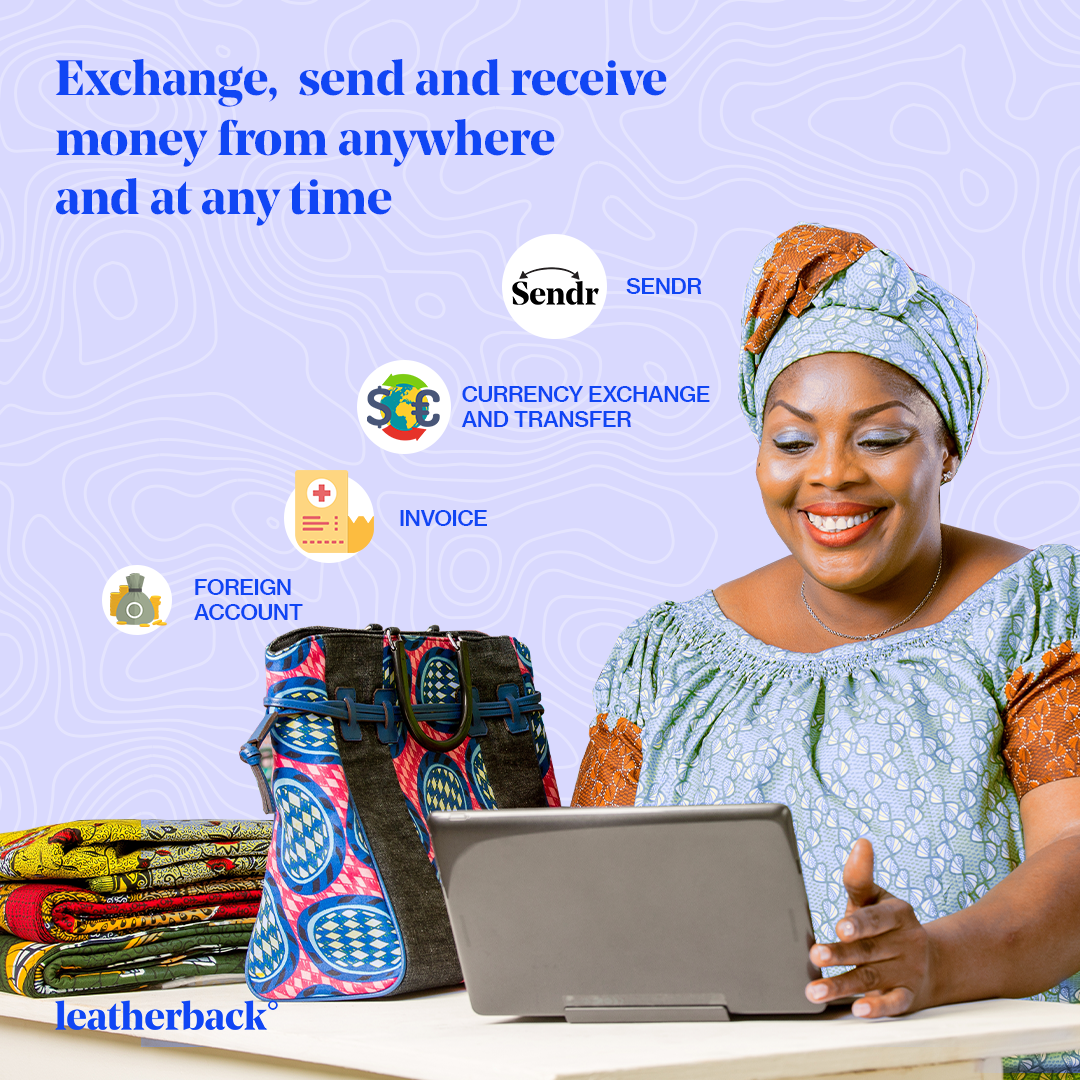FINTECH
Choosing the Right Payment Solution for your Business

Choosing the Right Payment Solution for your Business.
It is a no Brainerd that having the right payment service provider can do a lot of good for your business. They have a way of easing payment collection from customers spread across the globe through a platform designed to adapt to fit in numerous payment methods, currencies, as channels over time. Also, the right payment Solution can be a cost-cutting option when it comes to using a payment gateway for business or creating a merchant account.
You have probably been wondering how to identify the right payment Solution for your business. Here, we will give you a breakdown of the features that make up the ideal payment solution and other characteristics that will help you make an informed decision on the perfect payment solution your business needs to grow.
Payment Solutions and How they Serve Businesses
Customers love to have a wide range of options at their disposal when they want to pay for services online. This is even more common in cases where you run an international business where different demography of people come to shop. Given the difference in the needs of customers, we have a very fragmented payment landscape which makes it quite difficult to be in touch with all the newly introduced technologies which influences a constantly changing customer preferences.
Payment Service Providers provide services to businesses such as eCommerce and retail stores by giving them the ability to accept all sorts of payment options available. In simple terms, Payment Service Providers do the rough work involved in facilitating, accepting, processing and managing payment transactions. As a result, you as a business gets to provide customers with a series of payment options without spending on integration and processing expenses.
So the big question remain how to identify the ideal Payment Solution your business needs. Let’s take you through a number of required features of a Payment Solution that can significantly contribute to the growth of your business.
Omni-Channel and Cross-Border Payments
Flexibility is one of the most important features to look for in a payment service provider. You, as a business, should have the freedom to select from a number of methods and channels that best satisfy your business needs and those of your customers.
A payment service provider with a series of channels which includes local card payments, international payments, funds transfer, digital wallets and so on; is one that you should choose at any given period. The focus shouldn’t all be on the payment methods as well. You need to keep in mind the needs of international customers who would most likely prefer to shop in their local currencies. This is valid also for businesses who are yet to sell overseas, as business could expand in the future to cover a wider market across the globe.
You need to understand that not only do customers feel comfortable shopping in their local currency, it also stimulates the feeling of inclusion which contributes so much in customer retention. Leatherback is one such payment solution that allow business like yours integrate multiple payment channels on your ecommerce website, while also facilitating cross-border payments for several businesses.
Seamless Checkout Experience
Statistics have shown that over 41% of users of Ecommerce websites worldwide abandon their carts or are unable to complete purchases due to a poor checkout experience. While the right payment Solution may offer customers different payment options, considering the checkout experience it provide customers is equally vital. The design of the checkout page and its ease of navigation are important features you should check out for.
A great payment service provider is one that provides customers with smooth experience which can help influence customer decision to complete their purchase. Features that ensure a smooth checkout experience includes a single page and single click checkout, alongside personalized pages.
A smooth checkout experience should not be just for your customers. Business owners are required to identify a payment service provider that can deliver an uncomplicated, credible, and proactive customer service which can also do more to help customers with issues and resolve their concerns.
Customer Engagement
While anyone would agree that the checkout page is the peak of customer interaction, it is critical to add value and stimulate growth across several touchpoints of customer journey. Today, the automation and integration of mobile customer communication and direct processing of online payment in a creative manner is achievable.
For context, your customer’s preferred messaging platform like WhatsApp or Apples for business could be integrated. As a result, you will be able to communicate with your clusters prior to processing their payments. This adds much more value to customer experience.
https://www.youtube.com/shorts/nni5i9zHsiQ
Security, Compliance, and Fraud Prevention
Without a doubt, security is one of the most important things that comes to mind when it comes to anything related to money, payments, or transactions. However, regulatory compliance and fraud prevention are also equally important features to look out for in a payment service provider. As such, businesses need a PSP that complies with local and international requirements, while also protecting customers from data theft, transaction hijacking, and breach of privacy.
Other payment service providers recommend screening services to help businesses identify and prevent potential frauds, as well as enhancing the online payment journey.
The Right Payment Service Provider for You
The vital features that businesses need to look for in a payment service provider before employing one are provided in this article. The features outlined here are exactly the ones businesses will find when they use our payment solutions at Leatherback. These features show that we have everything it takes to transform your business into a booming, international eCommerce business.
At Leatherback, we offer multiple omni-channel payment methods that are secure, scalable and easy to integrate with web and mobile environments. These features help fortify your business and helps you have a better chance at establishing a successful and adaptable business by attracting, engaging and retaining customers as technologies and behaviors evolve.
Join us at Leatherback and watch how we help transform your business to a global brand!
More from my site
FINTECH
Kazang Pay launches card acquiring service in Zambia

Kazang (www.Kazang.com), the prepaid value-added services (VAS) and card acquiring business within JSE-listed fintech Lesaka Technologies, has launched its Kazang Pay card acceptance solution for merchants in Zambia. Kazang Pay makes it affordable for merchants to accept card payments on the same Kazang terminal they use to sell prepaid products and services.

The Kazang Pay enabled terminal in Zambia accepts VISA debit and credit cards as well as mobile wallet payments. Payments are settled to the merchant’s Kazang wallet on the same day. It’s as easy as letting the customer tap or insert their bank card and enter their PIN on the secure scramble PIN pad.
Kazang operates around 12,000 VAS terminals in Zambia. The goal is to enable the majority to accept card payments over the next six months. Benefits to merchants include low transaction fees and no monthly terminal rental fee for those that meet a modest monthly transaction threshold as well as the opportunity to grow their business through card acceptance.
Kazang is Zambia’s largest VAS point-of-sale terminal provider, enabling mobile money payments, bank and mobile money cash in and out, bill payments, airtime, Zesco, and many other prepaid services on one platform. The addition of card acceptance makes the platform even more comprehensive for merchants and consumers alike.
The launch of Kazang Pay in Zambia follows the introduction of the solution in South Africa, where around 60,000 small and micro merchants use Kazang Pay to accept card payments. In Zambia, there are around 3.8 million debit, credit and ATM cards in issue and 41,000 point of sale (POS) terminals in place. The value of POS transactions has grown to K 111.4 billion by 2022 from less than K 20 billion in 2018, according to the Bank of Zambia.
Says Leon de Wit, managing director at Kazang Zambia: “Zambia has made enormous strides in terms of financial inclusion, with card usage and penetration growing at a rapid pace. With Kazang Pay, merchants can now easily accept card payments on the same all-in-one terminal they already use for vending of VAS products.
“Card transactions help merchants to grow basket sizes and potentially attract more customers, and at the same time, reduce the risks and costs of handling cash. Moving towards digitalised payments will also enable merchants to track sales, manage cash flow, and create a footprint that could make it easier for them to access loans.”
Ashley Naidoo, director of Kazang Pay in South Africa says: “Our Zambian merchants have eagerly embraced our card acquiring service as a valuable part of our one-stop solution. Following the launch of Kazang Pay in Zambia, we have seen higher VAS sales across our merchant base and much-improved merchant retention and with our card acquiring solution we now appeal to a broader merchant base.”
Distributed by APO Group on behalf of Kazang.
ABOUT KAZANG:
Kazang (www.Kazang.com) is a leading provider of cash and digital solutions to merchants in Southern Africa’s informal economies. Our fintech solutions include a diverse range of value-added services (VAS), card acquiring, secure cash vaults and supplier payments platforms. Operating with a network of approximately 90,000 active devices, we process approximately 2.2 million transactions daily in markets such as South Africa, Namibia, Botswana, and Zambia.
We are dedicated to helping small and medium merchants grow and succeed, through increasing their sales, making their businesses more efficient and reducing their risks with its holistic portfolio of products and services. Kazang is a member of Lesaka Technologies (https://LesakaTech.com).
ABOUT LESAKA TECHNOLOGIES, INC:
The Connect Group and Kazang was acquired by Lesaka Technologies, Inc. in April 2022. Lesaka Technologies, (Lesaka™) is a South African Fintech company that utilizes its proprietary banking and payment technologies to deliver superior financial services solutions to merchants (B2B) and consumers (B2C) in Southern Africa. Lesaka’s mission is to drive true financial inclusion for both merchant and consumer markets through offering affordable financial services to previously underserved sectors of the economy. Lesaka offers cash management solutions, growth capital, card acquiring, bill payment technologies and value-added services to retail merchants as well as banking, lending, and insurance solutions to consumers across Southern Africa.
Lesaka has a primary listing on NASDAQ (NasdaqGS: LSAK) and a secondary listing on the Johannesburg Stock Exchange (JSE: LSK). Visit www.LesakaTech.com for additional information about Lesaka Technologies (Lesaka ™). $LSK / $LSAK
More from my site
Bitcoin
Binance expands crypto access in West and Central Africa with mobile money integration
Binance expands crypto access in West and Central Africa with mobile money integration
This new service currently supports only BUY transactions, further simplifying the entry point for new crypto users in these regions
Binance (www.Binance.com), the world’s leading blockchain and cryptocurrency infrastructure provider continues to drive innovation and expand access to cryptocurrency in Africa, now allowing users in Benin, Cameroon, Ivory Coast, Democratic Republic of Congo (DRC), Togo and Senegal to purchase crypto directly through mobile money payments enabled through local partnerships.
This new functionality further strengthens Binance’s commitment to providing simple and secure access to cryptocurrency for users across the continent, reinforcing the platform’s vision of financial inclusion.
Samantha Fuller, Spokeswoman for Binance says “We remain focused on advancing financial inclusion and delivering user-friendly solutions for crypto adoption across Africa. This expansion into West and Central Africa is a significant step in our mission to increase crypto adoption, providing millions of people with more direct access to the global digital economy”.
This new service currently supports only BUY transactions, further simplifying the entry point for new crypto users in these regions, while providing them with a reliable and secure platform to acquire digital assets.
How to buy crypto:
Log in to your Binance app and select [Add Funds] from the homepage.
Choose your local fiat currency you wish to use by selecting the currency in the top-right column.
Follow the instructions to complete your crypto purchase.
Distributed by APO Group on behalf of Binance.
About Binance:
Binance is the world’s leading blockchain ecosystem and cryptocurrency infrastructure provider with a financial product suite that includes the largest digital asset exchange by volume. Trusted by millions worldwide, the Binance platform is dedicated to increasing the freedom of money for users and features an unmatched portfolio of crypto products and offerings, including trading and finance, education, data and research, social good, investment and incubation, decentralisation and infrastructure solutions, and more. For more information, visit: https://www.Binance.com
Risk Warning: Digital asset prices are subject to high market risk and price volatility. The value of your investment may go down or up, and you may not get back the amount invested. You are solely responsible for your investment decisions and Binance is not liable for any losses you may incur. Past performance is not a reliable predictor of future performance. You should only invest in products you are familiar with and where you understand the risks. You should carefully consider your investment experience, financial situation, investment objectives and risk tolerance and consult an independent financial adviser before investing. This material should not be construed as financial advice. For more information, see our Terms of Use and Risk Warning.
More from my site
BANKING
Financial Analysis: A Comprehensive Study of The Well-Being of A Country

Financial Analysis: A Comprehensive Study of The Well-Being of A Country
Understanding the financial stability of a country requires a thorough understanding of financial analysis. In order to offer insights into the overall financial stability and overall wellness of the country, it entails evaluating a range of economic indicators, financial performance, and market movements.
In this article, we will delve into the fundamentals and importance of financial analysis in evaluating a country’s economic situation.
THE HISTORY ABOUT FINANCIAL ANALYSIS
Ancient Beginnings:
The roots of financial analysis can be traced back thousands of years. The ancient Mesopotamians, Egyptians, and Greeks were among the pioneers of documenting financial transactions, creating basic records of assets and liabilities. These early attempts laid the groundwork for the concept of financial analysis through the study of financial statements and ledgers.
Medieval Europe:
During the Middle Ages, Europe witnessed the rise of merchant guilds and the emergence of double-entry bookkeeping. Italian mathematician and Franciscan friar, Luca Pacioli, is often credited with formalizing double-entry bookkeeping, publishing his seminal work “Summa de arithmetica, geometria, proportioni et proportionalita” in 1494. The concept of balancing debits and credits within financial records formed the basis for modern financial analysis techniques.
Industrial Revolution:
The Industrial Revolution in the 18th and 19th centuries revolutionized business and the need for financial analysis grew rapidly. As companies expanded and diversified, investors began demanding more comprehensive financial reports to assess the potential risks and returns of their investments. The birth of limited liability companies further accelerated the need for financial analysis, as shareholders sought transparency in the performance of their investments.
Modern Era:
The 20th century witnessed significant advancements in financial analysis techniques. The advent of electronic computing in the mid-1900s enabled the processing and analysis of vast amounts of financial data, leading to the development of sophisticated financial models and ratios.
The Great Depression of the 1930s laid the groundwork for modern financial analysis as regulators sought effective ways to prevent future economic crises. The establishment of the U.S. Securities and Exchange Commission (SEC) in 1934 brought about standardized reporting requirements, including the filing of audited financial statements. This increased transparency and standardized financial reporting provided analysts with a more accurate and consistent basis for their analysis.
The Rise of Quantitative Analysis:
In the latter half of the 20th century, the growth of computing power and the availability of large data sets propelled financial analysis into new territory. Quantitative analysis, utilizing statistical models and mathematical algorithms, started gaining prominence. Financial analysts began incorporating complex mathematical methods to assess investment opportunities, risk management, and portfolio optimization.
Modern Financial Tools:
With the advent of the internet and the digital age, financial analysis has become even more accessible and data-driven. Sophisticated software programs, data analytics tools, and artificial intelligence have revolutionized the way financial data is analyzed and interpreted. In recent years, technologies like machine learning have been leveraged to develop predictive models that can assess future trends and make accurate financial forecasts.
MEANING
Financial analysis is the process of evaluating businesses, projects, budgets, and other finance-related transactions to determine their performance and suitability. Typically, financial analysis is used to analyze whether an entity is stable, solvent, liquid, or profitable enough to warrant a monetary investment.
Financial analysis is a fundamental tool that allows organizations and individuals to assess the past, present, and future financial health of a business or investment. Through a systematic examination and interpretation of financial statements, ratios, and other key indicators, financial analysis helps in making informed decisions, optimizing resources, and improving overall financial performance. In this article, we will delve into the meaning of financial analysis, its prominent components, and its significance across various sectors.
Financial analysis involves scrutinizing financial data to evaluate the performance and profitability of an entity. It assists in quantifying the effectiveness of financial decisions, identifying trends, predicting future outcomes, and benchmarking against industry standards. By analyzing financial statements, investors, analysts, and other stakeholders gain valuable insights into the financial position, liquidity, solvency, and operational efficiency of an organization.
FUNDAMENTALS OF FINANCIAL ANALYSIS IN A COUNTRY
- Gross Domestic Product (GDP): GDP is a primary indicator used to gauge the economic performance of a nation. Financial analysts analyze GDP growth rates and its components, such as consumer spending, government expenditure, investments, and net exports. This analysis helps in determining the overall strength of the economy and identifying areas of potential growth.
- Trade and Balance of Payments: Trade analysis focuses on a country’s imports, exports, and balance of payments. Evaluating trade patterns helps identify sectors driving the country’s economic growth, trade imbalances, and potential risks to the economy from external factors such as changes in global demand or disruptions in supply chains.
- Inflation and Interest Rates: Analyzing inflation rates and interest rates provides insights into the stability of a country’s economy. High inflation erodes purchasing power, while high-interest rates can impact borrowing costs, affect consumer spending, and investment behavior. Financial analysts assess the impact of inflation and interest rates on an economy’s overall competitiveness and economic growth potential.
- Government Debt and Fiscal Policy: Analyzing a country’s government debt levels and fiscal policy is crucial in understanding its financial sustainability. A high level of government debt may lead to increased borrowing costs, reduced investor confidence, and potential risks to economic stability. Evaluating fiscal policies helps determine whether a country is managing its finances effectively and implementing sustainable economic growth strategies.
- Stock Market Performance: The stock market reflects investor sentiment and provides valuable insights into a country’s economic outlook. Analysts evaluate key stock market indices, such as the country’s primary exchange, sector-specific indices, and market capitalization trends. Monitoring stock market performance allows for an understanding of investor confidence, economic growth expectations, and potential risks to the financial system.
- Banking Sector and Financial Institutions: A robust banking sector is essential for economic stability. Financial analysts assess the health of the banking system by evaluating indicators such as non-performing loans, capital adequacy ratios, and the overall stability and soundness of financial institutions. Understanding the well-being of financial institutions helps gauge the potential risks to the overall economy, including credit availability, liquidity, and financial contagion.
- Regulatory Environment and Governance: The regulatory environment and governance play a critical role in attracting investment and fostering economic growth. Financial analysts assess the effectiveness of regulatory frameworks, transparency in financial transactions, and the overall credibility and efficiency of institutions responsible for enforcing regulations. Evaluating the regulatory environment aids in understanding potential risks and opportunities for sustainable economic development.
SIGNIFICANCE OF FINANCIAL ANALYSIS IN A COUNTRY
Financial analysis plays a vital role across various sectors, serving the following purposes:
- Evaluating Financial Performance: By conducting a comprehensive financial analysis, companies can assess their performance, profitability, and financial stability. This, in turn, helps in identifying areas for improvement, developing strategic plans, and making sound financial decisions.
- Assessing Investment Viability: Investors rely on financial analysis to evaluate the profitability and risks associated with potential investments. Through detailed scrutiny of financial data, investors can determine the financial health and growth prospects of a company, aiding in making informed investment decisions.
- Facilitating Lending Decisions: Financial institutions utilize financial analysis to assess the creditworthiness of loan applicants. By analyzing financial statements, evaluating ratios, and assessing the risk profile, lenders can ascertain the borrower’s ability to repay loans and make sound lending decisions.
- Supporting Strategic Decision-Making: Financial analysis aids in strategic decision-making, such as expansion, diversification, or mergers and acquisitions. Understanding a company’s financial position and performance provides a foundation for evaluating the feasibility and potential outcomes of such decisions.
CONCLUSION
Conducting a comprehensive financial analysis provides valuable insights into the economic landscape of a country. By evaluating indicators such as GDP, trade patterns, inflation rates, government debt, stock market performance, banking sector health, and regulatory environment, financial analysts can gauge the overall financial health, identify potential risks, and recommend strategies for sustainable economic growth. Accurate and timely financial analysis acts as a compass, guiding policymakers, investors, and businesses to make informed decisions and contribute to the overall prosperity of the nation.
More from my site
-
EDUCATION2 years ago
Jamb Cut-Off Mark for A Law Degree in Nigerian Universities
-
BANKING2 years ago
POLARIS Bank Transfer Code| How to Activate the USSD Banking Code
-
BANKING2 years ago
Union Bank Transfer Code| How to Activate the USSD Banking Code
-
BANKING2 years ago
FIRST Bank Transfer Code| How to Activate the USSD Banking Code
-
BANKING2 years ago
How to Check UBA Account Balance From Anywhere
-
BANKING2 years ago
GT Bank Transfer Code| How to Activate the USSD Banking Code
-
BANKING2 years ago
Check GTB Account Balance via Internet and USSD Code
-
BANKING2 years ago
ZENITH Bank Transfer Code| How to Activate the USSD Banking Code





































